Home
How to be a good host without die trying?
- Details
- Written by: Gianna Esquivel
- Hits: 972
As travelers, all of us know how important is to look for accommodation. To have a place to overnight is one of the biggest worries. The direct way to solve this need is to book a room in a hotel or hostel or to rent a place. But sometimes, a last-minute arrival, peak season, an unexpected event can make these choices hard to get or unavailable.
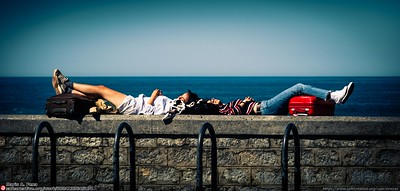
| Follow PackAndGo.info at: | |
| YouTube | @packandgo. |
| @packandgo.info | |
| X | @packandgoinfo |
| Bluesky | @packandgo.bsky.social |
| @packandgo.info | |
| TikTok | @packandgo.info |
These scenarios are really common, especially in touristic destinations. Have you ever asked a friend or someone to host you? What would you do if you have the chance to host someone? Is it possible to solve this big traveler concern without losing your privacy or feeling invaded? Could we keep the calm of our place and nice relation with our guests? To invite someone to stay in your home can be a cool experience or a nightmare.
We have heard thousands of stories by now, positive and negative. People who have found in hosting a way of traveling without leaving their place while meeting new nice people. But also people who don't want to open their sanctuary (home) to others anymore.

Well, after experiencing both sides in different moments (being guests and hosts), we have some tips to share with you!
What is the key to being a good host?
The key to being a good host is to communicate properly and honestly. If you will host someone at your home, before accepting him or her, both sides must express everything, their visit’s purpose, plans, length of time, etc. Nobody, neither the host nor the guest must assume stuff!
Unsaid things are a chance for many misunderstandings.
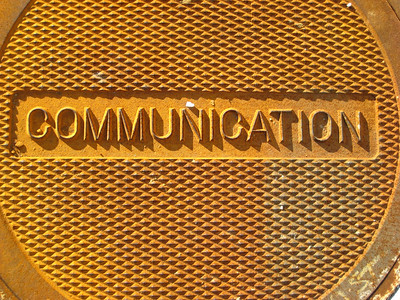
How to be a good host without die trying?
Here you have some useful recommendations based on true experience.
Think seriously about the request.
When someone asks you "hey, dude I'm going to your beautiful city for the holidays. Could you host me?". Don't answer the request immediately. Check how busy your agenda is? Are you in a good mood to have visitors? We can get excited with the request but also we could feel badly pushed, shy, afraid...
It depends on how social and tolerant you are having people around. If you are experiencing some bad days that require you to be a bit lonely. If you don't trust the people. If your place will be busy with workers of any kind or you need it for your freelance job... better say clearly and openly. "No, maybe next time".

Get the whole picture before saying "yes".
In some cultures, people consider it’s rude to condition the answer for hosting or to dig into guests' plans. Please, no matter your nationality or traditions, it’s your home, so you have the right to know people's plans. If the request comes from family members, friends, or unknown travelers (Couchsurfing platform, BeWelcome.org, Couchers.org, for instance), it doesn't make any difference.
Ask! How long they are planning to stay with you? How many people does the plan involve? Are they moving by themselves once there? They sound like basic things but there are still many complaints from hosts around the world who wrongly assumed they would host for just 2,3 days and suddenly the guests moved after a month. Single requests that became a 'party' of 3,4 or more guys at their home. Or people spending entire days at their home waiting for them (hosts) to be the ones driving them (guests) around the city.
Both sides must be clear and direct. Be sure not to assume a single detail. Ask everything you need to know not to suffer afterward!
Talking about friends, check this article: "Unexpected friendship lessons, only traveling can teach you".
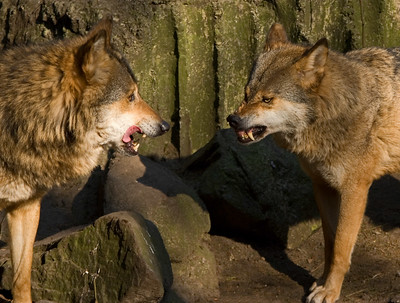
Have a specific place for hosting.
Hospitality is a very nice practice. It doesn't matter if you live in a big or small apartment, in a luxurious or humble house, on a farm, a hut, or a tiny studio. But to choose in advance the place where guests will sleep to describe it properly can stop guests' wrong expectations. To have an independent room for them is very practical to host guests. But if they have to share the bedroom with you, if you just have a mattress, an old couch, a hammock for them to sleep in, or you don't have such thing, say it clearly for them to be prepared.
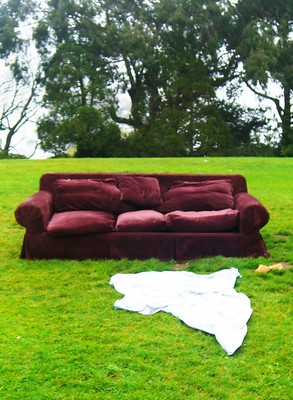
Clean!
Here we think everybody will agree. Even if you just offer a place to sleep on the ground of your living room, clean it for the guests! A few things are as disgusting as sleeping in a dirty place, receiving bad smelly bedsheets, lying down on a surface with bugs... To offer a clean place for hosting visitors is a must!
When we are talking about preparations, you might also be interested in "What to do before leaving home for a long holiday?".
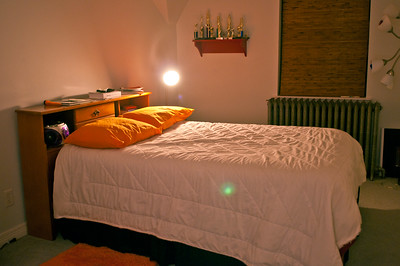
Avoid fake expectations.
There are many factors involved in a trip decision. The time people will spend, the kind of adventure they have in mind, the relationship they have with you...
Let's face it, many people will ask you to host them just because they need to save money, your location is convenient for their plans, they feel safer staying with someone who lives in the place... Ok, sometimes it could be true they miss you or want to meet the charming and awesome guy you are... but not necessarily. Talk about it clearly and avoid fake expectations. Know if you will spend time with them or if they are only asking you for a place to stay.

Without this information, to modify or pause your agenda assuming they maybe invite you to join their plans, can be a mistake. Avoid disappointment or frustration. If you want to have time with your guests that could be perfectly arranged. But the clue again is to talk about it!

Give a home tour!
By this point for sure, you accepted to host so why don't you plan a tour to welcome them? We move already instinctively around our home but let's make that task easy for the guests. And, in this way, let's establish the rules that are important for us to be respected.
Point kindly but also firmly the spaces that are open for them and the ones that are not. If you have delicate stuff you prefer not to be touched, pets that you don't want to be fed by the guests, just say it! We all have personal habits and also some maniacs. It’s ok. It’s your home, right? So if you have that special cup your grandma gave you to drink your daily coffee, say it: “it’s just mine!”. They could take it if they ignore it’s your favorite and get you so angry.
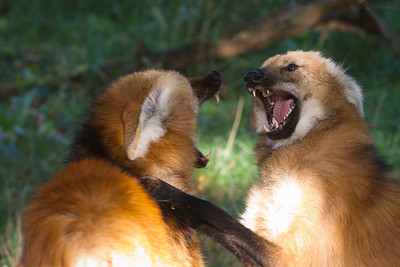
Don't make people guess. If you share something from your fridge or not. If you need to be the first to take shower in the morning, say it! You are working. They are on holiday. Schedules and turns could be easily organized based on priorities. It’s not fair to push our guests to get uncomfortable 'mistakes' because we didn't talk about something properly.
To share or not the keys?
Hospitality is also a leap of faith. If you know people or not, always there can be surprises in human behavior. But to trust even in these hard times leaves a very nice feeling. Take the first minutes in the arrival to feel the environment and people's viber. If there is a nice interaction, you like their manners and they are capable enough to make you feel they are trustable, try! It has some advantages. In case they arrive late, you don't have to be waiting for them. If they forget something, you don't have to leave your job to help them. But take your time to decide this. It’s not a must to do it!
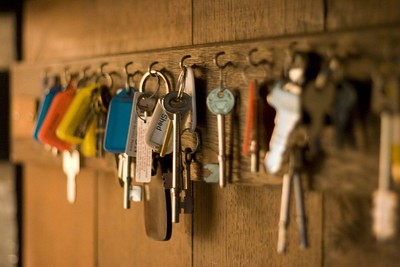
Make your guests independent.
Of course, you should try to have some nice moments with your guests. But always is good to provide them information about transportation in the city, schedules, rates, day and night choices, etc. for them to enjoy by themselves and not to depend totally on you and the free time your tight schedule allows.
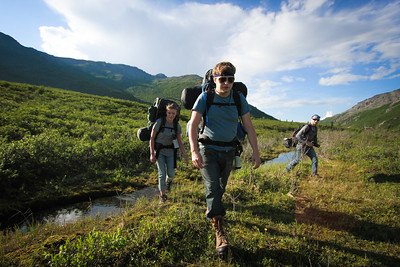
Talk openly about COVID-19 and other illnesses.
Before the current pandemic, honestly we didn’t think about this. But it’s important not only to be polite and generous with the guests but also to take care of your health and your family's. Talk openly with your guests about the topic. Ask them if they are healthy. Tell them clearly how they can make you feel safer. And be sure you get to know how you can make them feel safe too. Both sides are to be considered.
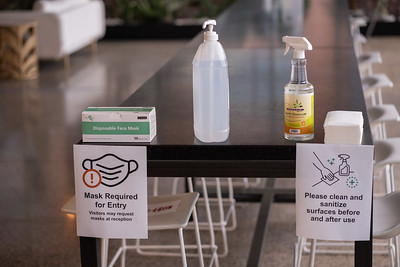
It’s your home and they should agree on your rules and healthy measures. But also how acceptable are theirs for you? If they don’t like your rules or you can’t accept theirs, it’s better not to host them. The objective should be to have a nice time together. To have a daily debate at home against or in favor of masks, vaccines, social distance, washing hands, etc. could be stressful.
Advantages of hosting people.
- It’s nice to meet friends you can’t see frequently.
- Having guests breaks a bit the routine and adds a refreshing touch.
- Having guests is a good motivation to order and clean your home.
- The exchange of ideas with people that don’t belong to your regular context can give you new ideas and different perspectives.
- Interaction with foreigners can give you a picture of their countries. If you haven’t traveled there, this is a good way to know about them.
- Having guests you will become a tourist in your city or town. Visiting common places for you with them will make the experience different and more interesting.
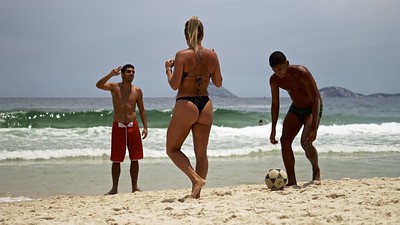
Disadvantages of hosting people.
- Sharing the space is not easy for some people so hosting can be an uncomfortable experience.
- Hosting people demands a bit of your time so think it twice if you are too busy.
- If you are not used to interacting with foreigners or you are not very tolerant, cultural differences could be a struggle.
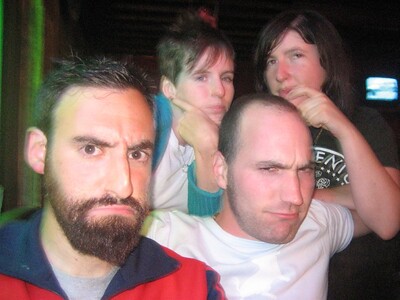
Conclusion.
After many experiences, we can say that hosting is a very nice practice. You always learn! From positive and negative experiences. It makes you improve empathy and tolerance. And the nicest thing for us, it’s to know we contribute a bit to get our guests a great time! Next time, it can be our turn. We could be the protagonists of a great trip adventure!
Share your experiences with us.
| Follow PackAndGo.info at: | |
| YouTube | @packandgo. |
| @packandgo.info | |
| X | @packandgoinfo |
| Bluesky | @packandgo.bsky.social |
| @packandgo.info | |
| TikTok | @packandgo.info |

Pangaion Mountain, where Orpheus cried out his soul!
- Details
- Written by: Gianna Esquivel
- Hits: 960
How do you like the title? Dramatic, right? While visiting Greece, you have zero chances to escape from the plenty of narrations related to Greek mythology. Greeks love those stories and take every opportunity to tell you about Zeus, Aphrodite, Hermes, Heracles (Hercules), Medusa, and many more. We enjoy them very much because of the passion people put into the telling. It is like they are talking about real heroes. Besides, the stories of these characters have a perfect dose of conflict, drama, passion, romance, treason, and death. You can listen for hours and stay on the edge of your seat, like when you watch your favorite thriller or drama.
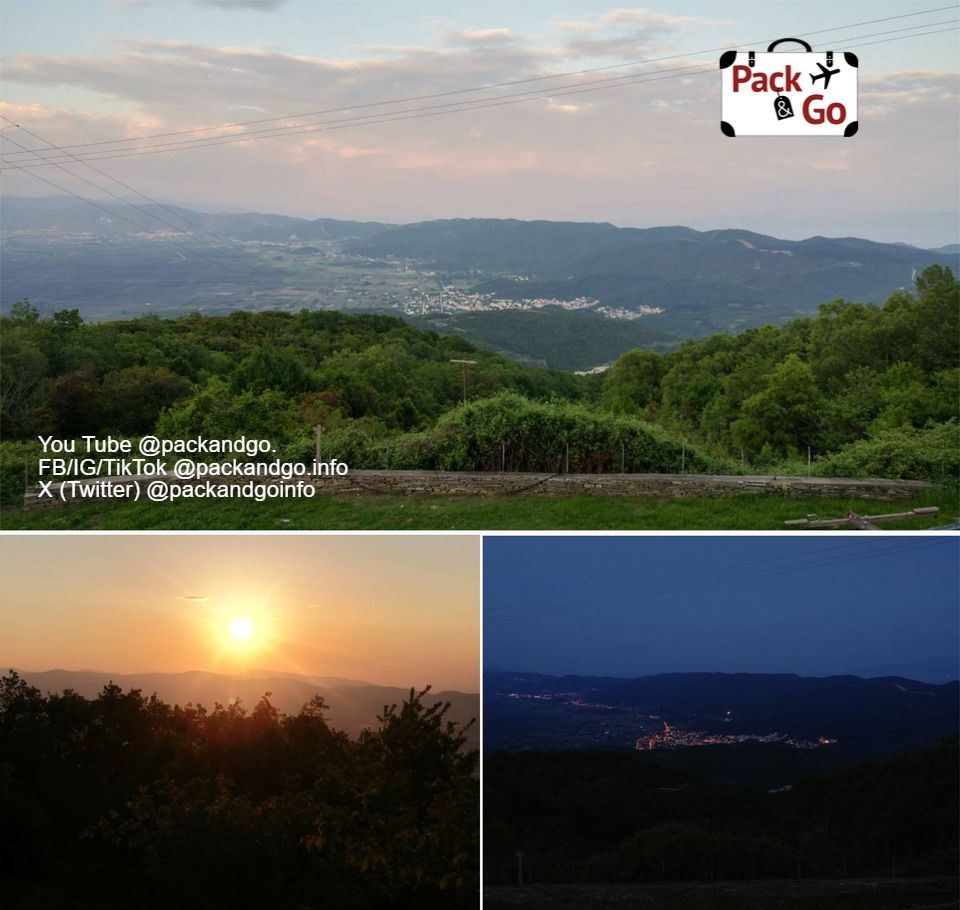
The stories about Orpheus have accompanied us since the beginning of this trip. Finally, while visiting Pangaion Mountain, we heard the complete Orpheus myth told fascinatingly by a very nice Greek man.
We have no idea what Orpheus' voice or music sounded like, but we could almost hear both as we followed the story. It was a fun experience because as the story progressed, M and I musicalized Orpheus' love tragedy in our heads with contemporary musical references. Stay there and read until the end to know who the hell was Orpheus? What did happen in Pangaion Mountain? Was it true or just a myth? Then you can decide if to visit it or not.
What was Orpheus famous for?
Orpheus was not the feared leader of large armies or a skilled fighter like Jason or Heracles (Hercules) were. But he only needed music and his songs to succeed. Yes! Orpheus was a music composer, singer, and lyre player. It is said that his music was as beautiful and captivating, that no creature on Earth was not enchanted by it. He had a big gift and through it, he becharmed humans, rocks, trees, wild beasts, sirens, and even the gods! Orpheus was also famous for being the protagonist of a tragic love story with Eurydice.
He lived in Thrace, in the Northeastern part of Greece, exactly where we are traveling right now! But, when it comes to where Orpheus was born, lived, and died, answers can differ based on who responds to you. It is not rare that every country or town offers you a different version. Contradictions are very common and Orpheus's story is not an exception so take it easy.
Who was Orpheus?

The version we got says, Orpheus was the son of the muse Calliope and Oeagrus, a Thracian king. He is supposed to be born in Pimpleia, Piera, close to the Mount Olympus foothills. In Greek mythology, Calliope is considered the muse of dance, music, song, epic poetry, and the eloquence gift of kings. Such talents also attracted the eyes and heart of a god, Apollo, with whom she had two sons, Lalemus and Hymenaeus. And here the story gets messy. Some will say, that Apollo, god of poetry, music, sun, and light, saw Orpheus's gift, therefore he gave the kid his first lyre. But others will state that Apollo was Orpheus's father.
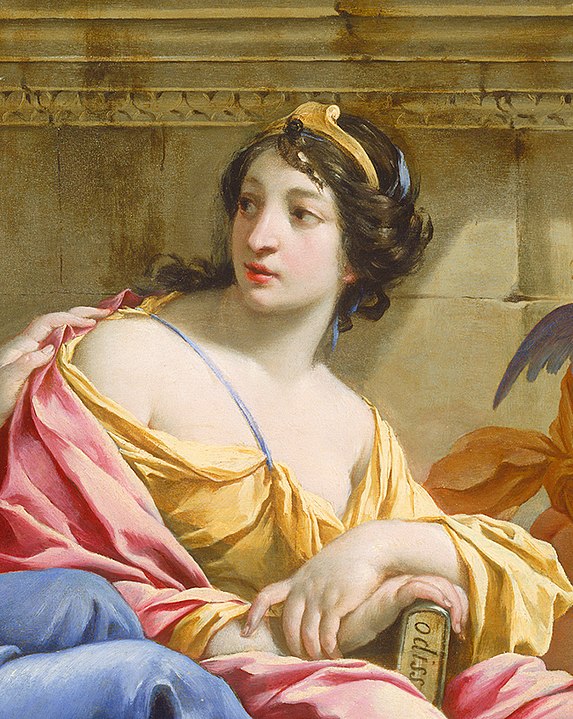
Public Domain.
In any case, this shows that Orpheus's gift was not a random event, having such a mother and with Apollo by his side or being his father, his talent was inherited. Due to his origin, some attributed him also the power of eloquently speech and prophesizing.
Was Orpheus a mortal or a god?
Many authors claim he was a mortal. But let’s see if his parents were Calliope and Apollo, Orpheus was definitely not a mortal. Apollo was a god and Calliope a muse, and muses were considered sort of goddesses too. If his parents were Calliope and Thracian King Oeagrus, Orpheus was a demigod, son of a goddess and a human. This makes sense because demigods could not escape death… and love just like we humans!

What are the most famous tales about Orpheus?
Orpheus took part in different adventures in which the music, his gift, was life-saving. Consider that the enchanting power of his voice and lyre stopped even the wildest rivers. They stopped their savage currents from flowing just to listen and enjoy Orpheus's music. It was such a useful gift, wasn’t it? Some of the most famous tales (myths) about Orpheus are:
Jason and the Argonauts
This myth revolves around Jason, a Greek hero, and his quest to retrieve the Golden Fleece, a symbol of authority, honor, and kingship. Jason was the rightful heir to the throne of Iolcus, however, his uncle Pelias usurped the throne and exiled him. To reclaim his rightful place, Jason embarked on a perilous journey to Colchis (currently Georgia), where the Golden Fleece was guarded by a fierce dragon and hung from a sacred tree. It was a dangerous quest so Jason recruited a group of heroes: the Argonauts.
Orpheus was one of the Argonauts and his musical talents were essential during this expedition. He used his music to soothe savage beasts and fears, comfort his companions, tame storms, treacherous waters, and the dragon itself.
| Follow PackAndGo.info at: | |
| YouTube | @packandgo. |
| @packandgo.info | |
| X | @packandgoinfo |
| Bluesky | @packandgo.bsky.social |
| @packandgo.info | |
| TikTok | @packandgo.info |
Orpheus vs the Sirens
During the Argonautic expedition, Orpheus encountered some of the most fearsome creatures from Greek mythology, the sirens among them.
Sirens were creatures that would enchant their victims with an irresistible melody. They lured sailors passing by their rocky island with their mesmerizing songs, leading them to their doom by causing shipwrecks on the rocky shores. During the voyage of the Argonauts, they sailed near the dangerous sirens' island. To protect his fellow Argonauts from the perilous temptation of the sirens' songs, Orpheus did what he did best! He began to play his lyre and sang with such enchanting and harmonious melodies that his music drowned out the alluring voices of the sirens.
Orpheus and Eurydice myth
This is the tragic love story we mentioned at the beginning and we will tell you about it right now!
What is the myth of Orpheus and Eurydice about?
The myth of Orpheus and Eurydice is a tragic love story you can’t miss. Orpheus and Eurydice was a match that seemed made in heaven. After his Argonaut adventure, Orpheus met Eurydice, a shy and beautiful nymph, in a gathering. It was love at first sight... and listen! Once he saw her, there was no way back. She got enchanted and deeply in love right after listening to his voice and music. It was like a magical and beautiful spell she could not resist. It was physical attraction and also the effect of Orpheus's gift.
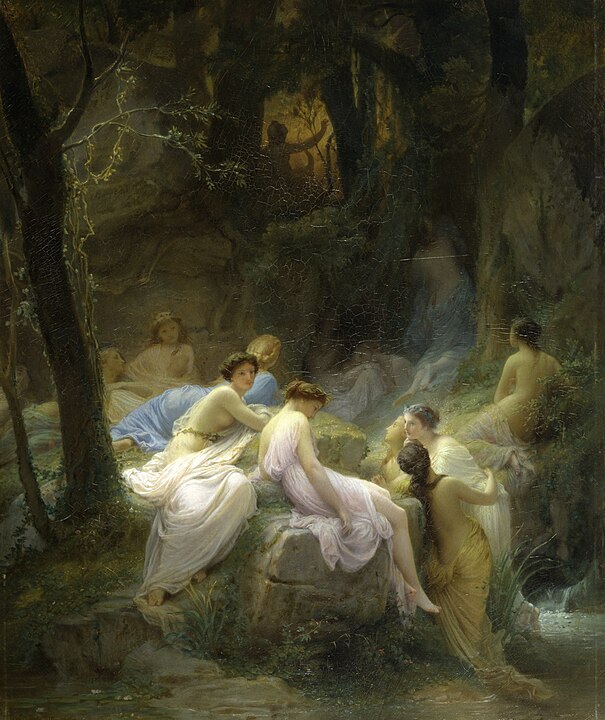
They became inseparable, a couple of lovebirds who could not hide their feelings for each other. Such a moment of Orpheus and Eurydice could have one of the following songs in the background:
- “Love is in the air” by John Paul Young (1977)
- "Can't Take My Eyes Off You" by Frankie Valli (1967)
- “Ho Hey” by The Lumineers (2012)
- “Fade into You” by Macy Star (1993)
- “Unchained Melody” by The Righteous Brothers (1955)
- "All of Me" by John Legend (2013)
- “Truly Madly Deeply” by Savage Garden (1997)
- "I Don't Want to Miss a Thing" by Aerosmith (1998)
- "Can't Help Falling in Love" by Elvis Presley (1962)
- "A Thousand Years" by Christina Perri (2011)
- "Love Story" by Taylor Swift (2008)
- "Crazy for You" by Madonna (1985)
- “I’m A Believer” by The Monkees (1966)
- "Perfect" by Ed Sheeran (2017)
- "Just the Way You Are" by Bruno Mars (2010)
- "Love on the Brain" by Rihanna (2016)
Can you feel the love and passion of this romance? Hopefully yes, otherwise you are not a human haha.
Soon, Orpheus and Eurydice decided to get married. Hymenaios, the god of marriage, informed the bride and groom that their happiness would last short. But the couple was madly in love and dismissed the warning.
The wedding day arrived, Hymenaios blessed their union and a great feast started. It was a great celebration, except for Aristaeus, a shepherd who despised Orpheus because he desired Eurydice for him. He plotted a plan and when the shadows grew large and everybody went home, Aristaeus hid in the bushes to kill Orpheus. When the newlyweds passed close by, Aristaeus tried to kill Orpheus but he failed. The couple desperately ran into the forest to escape from Aristaeus who closely chased them. Suddenly, Orpheus felt Eurydice’s hand slip from his grasp and then she fell.

The beautiful bride was bitten by a venomous viper and in a few minutes, a deathly pallor suffused her cheeks. It was the tragic end of a great love. Orpheus got into a deep depression and grief. He played the most sorrowful songs ever. No creature was not moved by the pain of his music. To give you an idea, these could be Orpheus’ playlist at that time:
- “Ain’t no sunshine” by Bill Withers (1971)
- “Goodbye My Lover” by James Blunt (2005)
- “My Heart Will Go On” by Celine Dion (1997)
- “Someone Like You” by Adele (2011)
- “Wish You Were Here” by Pink Floyd (1975)
- “Here Without You” by 3 Doors Down (2002)
- “I Will Always Love You” by Whitney Houston (1992)
Then, he had a great but dark idea: to go to the Underworld and try to get his wife back. He asked Apollo to talk to Hades, the god of the Underworld, to let him in and hear his plea. To descend to the realm of the dead was another perilous journey for Orpheus. Using his lyre and voice, he played his mesmerizing music and mournful songs to persuade Cerberus, the three-headed dog, and the ferryman Charon, the guardians of the Underworld, to let him pass.
He managed to reach the depths of the Underworld, and there, he faced Hades and Persephone, the rulers of the dead. The beauty and emotional power of Orpheus's musical lamentations touched Hades, Persephone, and every stone in the Underworld. Both rulers agreed to grant Orpheus his wish under one condition: he could lead Eurydice back to the world of the living, but he must not look back at her until they reach the surface. If he looked back, Eurydice would return to the Underworld forever.
The deal was accepted and love was about to achieve the feat, but while ascending from the Underworld, Orpheus suddenly could not hear Eurydice’s footsteps behind him. Did he lose her? Did Hades break the deal? Unable to resist the urge to ensure she was truly following him, he glanced back before they reached the surface. That was tragic!
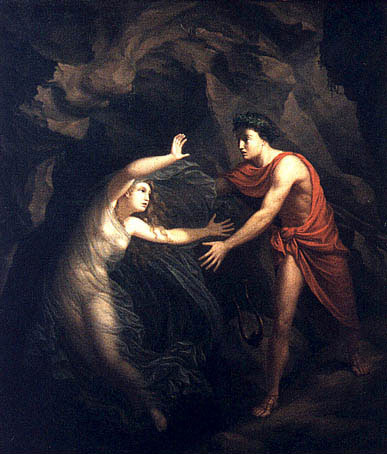
Public Domain.
Eurydice was instantly taken back to the realm of the dead and this time, forever. They were so close to making it! But he blew up the precious chance.
Orpheus was devastated and he spiraled into a deep, lifelong depression. His music and songs were dismal and he never looked for another wife.
How did Orpheus die?
After the tragedy, life sucked for Orpheus. He got back to Thrace, specifically to the Pangaion Mountain, where he literally cried out his soul! His music was the way to take out his grief. As a part of his routine, he daily climbed the Pangaion peaks to be the first to see the light of every day.
Orpheus started neglecting to worship Greek gods and goddesses. This made particularly angry the god of wine and pleasures, Dionysus. Besides, Dionysus's female followers, the Maenads, hated Orpheus because he refused them. He was not interested in women at all since the loss of Eurydice. Tired of Orpheus's grief and rejection, they decided to kill him.
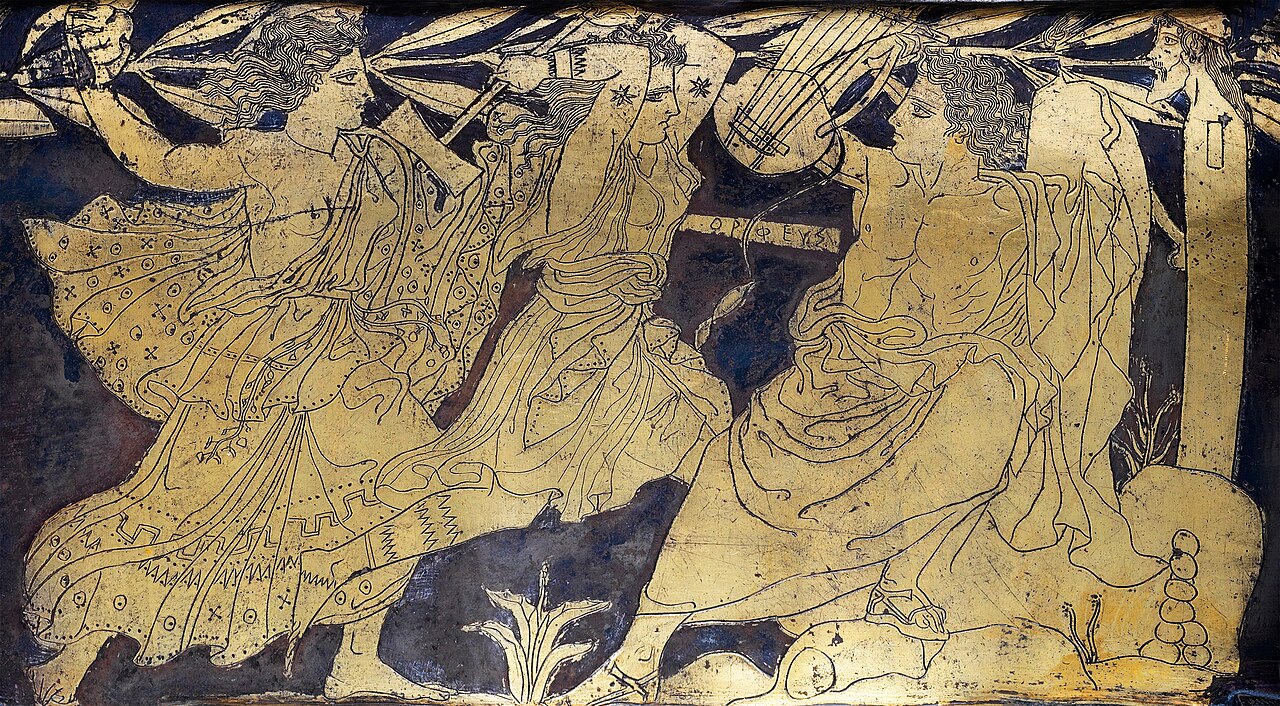
One day, while trekking in the woods of Pangaion Mountain, he encountered the Maenads. They attacked and tried to kill him by throwing rocks. But his lovely music caused the rocks to evade him, not to harm him. The Maenads got very mad. Killing Orpheus was not easy. They managed to attack him only when they started screaming and beating their drums until they drowned out Orpheus’ voice and music. Then, the Maenads finally killed him by tearing his body apart, limb by limb, with their own hands.
Where was Orpheus buried?
Early versions point out Pangaion Mountain as the place where Orpheus's remnants were buried. A further version tells Orpheus lyre and head reached the Hebros River, floated down until they encountered the sea, to finally arrive at the Lesbos Island pushed by the tides. The dismembered head of Orpheus -still singing- kept the power of speech, singing, and prophesizing. Aware of this, locals buried it and built a column of stone. With the power of the head, they started to prophesy. The rest of Orpheus’ remains were gathered from the Pangaion Mountain by the 9 Muses and buried in Leibethra, an ancient city at the base of Mount Olympus.

In 2002, a group of Greek archeologists claimed they found in Lesbos, the site where Orpheus remnants could be. But years later, Bulgarian archeologists announced that the place where Orpheus’ head was used to foretell was in Tatul, an archeological spot located in the core of the Rhodope mountain chain, close to the Kardzhali region.
To visit or not Pangaion Mountain?
Now, you know what happened in Pangaion Mountain. The place is also referred to as Pangaion Hills because its height is not very high. Its highest peak (Koutra) is 1,956 m. It is located in Northeastern Greece, 40 km away from Kavala City. It is close to other beautiful towns and beaches such as Palio, Nea Iraklitsa, Nea Peramos, and Ammolofoi Beach. Pangaion is a place rich in history, culture, and natural beauty. In the past, its ancient mines were a source of gold.
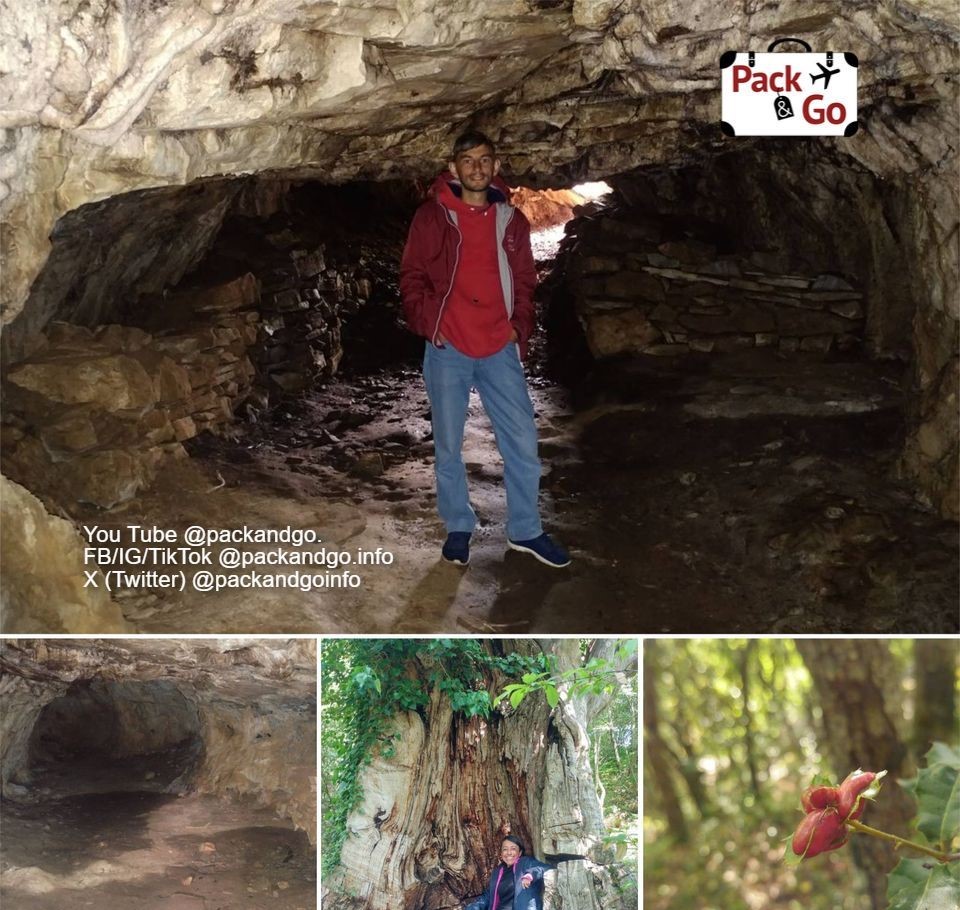
If you visit Pangaion Mountain, you can trek or hike the mountain trails, and enjoy the stunning scenery, have a look from the top to the Aegean Sea, while discovering remnants of caves and ancient settlements. The environment is calm and relaxing, ideal for outdoor adventures and to connect with Greek mythology. So, if your heart is broken, you can visit Pangaion Mountain and cry out your soul!
You can plan a longer stay on this nice mountain. We stayed a week in Pangeo Forest Village -10.93 km from Pangaion Hills- and we enjoyed it a lot. If you are into forests, nature, and mountains, look for Eleftherios, he runs the place and you can have the best time there following his recommendations and chatting about Greek history. The view from the restaurant is great, just like the Greek coffee (hot and cold) and the fasolada cooked by Eleftherios' wife!
You can book a room contacting Eleftherios (FB)!
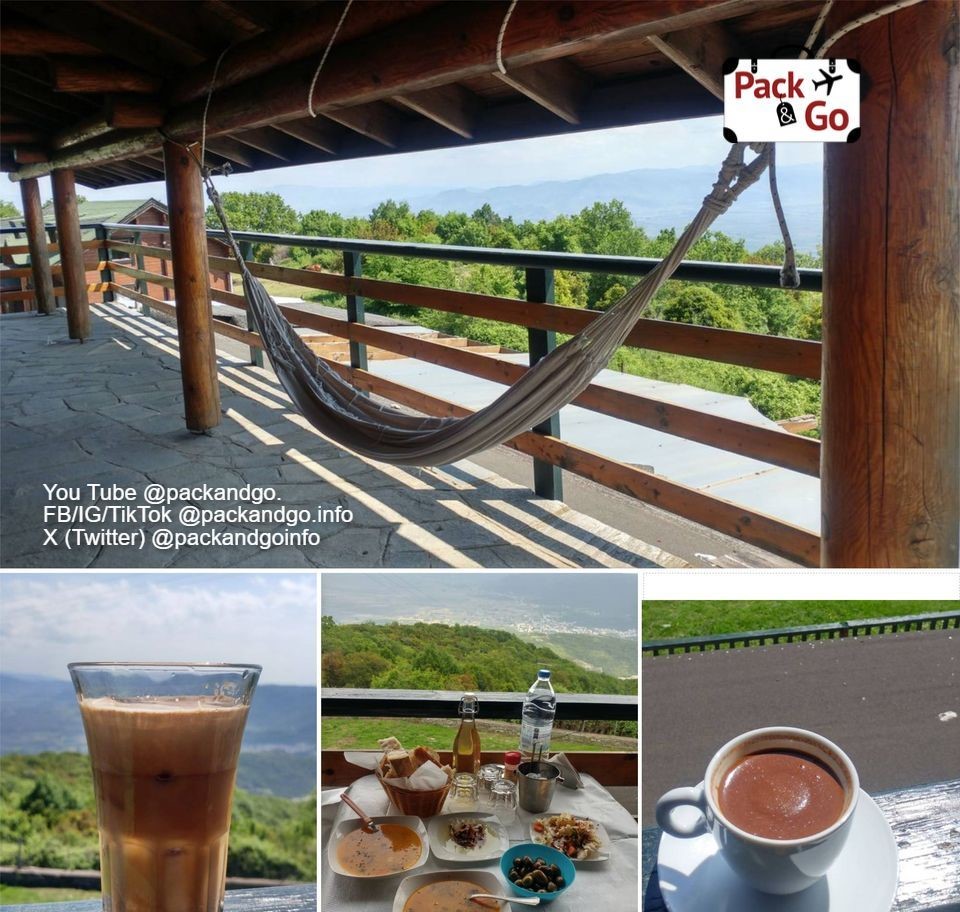
A warning for you! When you visit Greece, behave! Collect your garbage, explore but without damaging the landscape, and leave everything as clean and untouched as you found it. Greece is a land of ruthless gods! They are permanently watching you and each of your moves. Remember you are only a mortal without any special gift, so don’t mess with them!
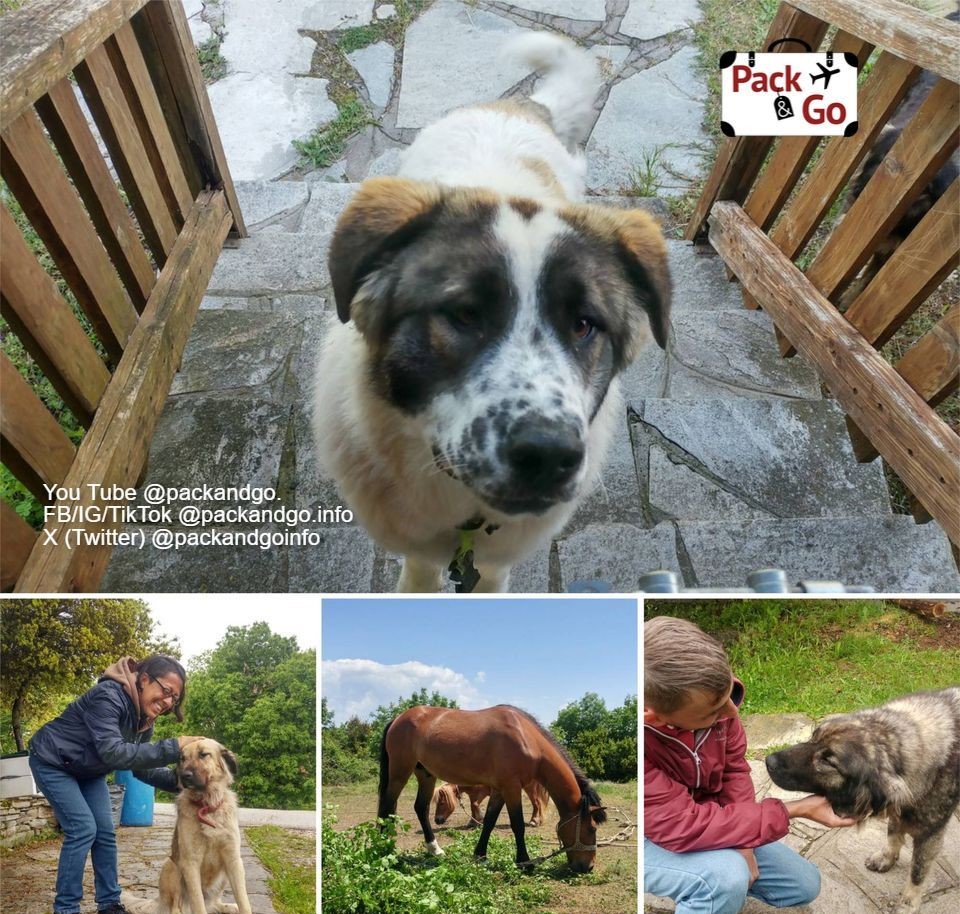
Conclusion
Greece is a great destination no matter the type of traveler you are. If you are into its deep history, archeological treasures, natural beauty, beaches, music, or mythology, it never disappoints! Follow our adventure in this land of gods, pleasures, and nice mortals. We still have a long way ahead.
You may want to read these articles too:
Kardzali is a hotspot for Turkish and Greek tourists, but not Bulgarian. Why?!
Why do youg people dislike Kavala?
It is official, Fanari has been occupied by Bulgaria!
Keramoti: The Beach Town You’re Not Visiting—And It’s Better Than Santorini!
| Follow PackAndGo.info at: | |
| YouTube | @packandgo. |
| @packandgo.info | |
| X | @packandgoinfo |
| Bluesky | @packandgo.bsky.social |
| @packandgo.info | |
| TikTok | @packandgo.info |
5 Mezcal cocktails to surprise your friends
- Details
- Written by: Gianna Esquivel
- Hits: 933
Like with other spirits, there’s a division about how to drink mezcal. Many bartenders and mezcal lovers recommend drinking it neat to enjoy its original taste. But there are enthusiasts who could not resist mixing it and preparing tasty cocktails. Based on personal experience and taste, some traditional cocktails, like mojitos, get really boosted to an alternative and delicious level with mezcal.
Here you have 5 mezcal cocktails you can easily prepare for your friends to toast in a Mexican style.
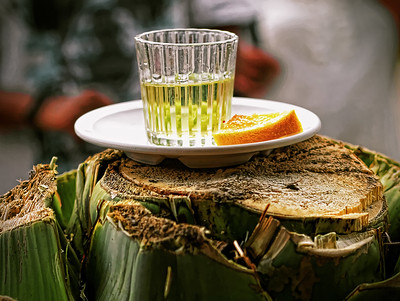
| Follow PackAndGo.info at: | |
| YouTube | @packandgo. |
| @packandgo.info | |
| X | @packandgoinfo |
| Bluesky | @packandgo.bsky.social |
| @packandgo.info | |
| TikTok | @packandgo.info |
Paloma with mezcal
Let’s start with a well-known cocktail, the Paloma. This is a very popular tequila cocktail (what is tequila?) but you will totally surprise your guests with its mezcal version. Tequila and mezcal have very different flavors. The smoky, earthy, floral, or fruity notes of mezcal (depending on the mezcal you choose) will make a big difference.
The protagonist of your ingredient list is mezcal (45 ml-1.5 oz). Choose the one you prefer and if you still don’t know how to choose one, check our article (All about the mezcal).
Then you need grapefruit (90 ml-3 oz) and lime (7.5 ml-0.25 oz) juices. Tonic water, salt, and a slice of grapefruit. Prepare a highball glass.
Get a shaker with ice and combine within it the mezcal, the juices and shake them up. Get a highball, rimmed with the salt, and add the amount of ice you like. Then strain the mixture. Fill the glass to the top with tonic water. And add the final touch, sit the slice of grapefruit in.

Mojito with mezcal
If you are a mojito lover, don’t take this as aggression against rum. We also like it! But you should give it a try to its mezcal version.
To prepare a mojito with mezcal you need peppermint or mint leaves (6 or more), fresh lime juice (30 ml-1 oz), white sugar (one teaspoon) or simple syrup (15 ml-0.5 oz), soda, ice, mezcal (45 ml-1.5 oz), and a long drink glass.
First, put the sugar in the glass. Like this, it will get mixed with the ingredients that are coming. Add ice, lime juice, mezcal, and peppermint or mint leaves. Grind a bit the leaves for them to release their aroma and taste, but don’t break them totally. They add taste but they are also part of the decoration. Fill the glass to the top with soda. Sit a slice of lime in the rim of the glass.
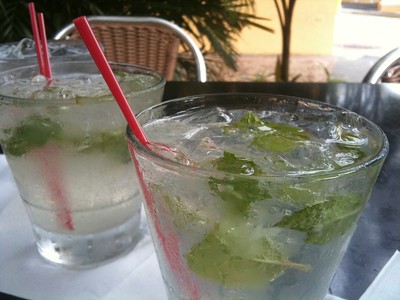
Strawberry frozen Margarita with mezcal
The already popular Margarita gets refreshed with this sexy mezcal version.
You need a Margarita glass or any glass with a wide rim for adding salt or sugar, what you prefer. Mexicans add a little bit of chili (Tajín) to this mix. Just run a lime around the rim of the glass and dip it into sugar or salt to get the rim coated.
Get in a blender, ice (2 cups), strawberries or strawberry syrup, lime juice (30 ml-1 oz), honey (15 ml-0.5 oz), and mezcal (45 ml-1.5 oz). Once the mixture gets slushy, pour it into the glass and sit a lime slice in the rim.
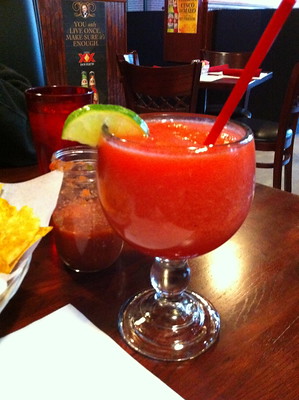
Sunset with mezcal
To think about sunset directly sends us to a chill mood, Summer, beach, and a delicious drink.
Get a Martini cup or a long glass and put it in the freezer 10 minutes before you prepare the cocktail. You can also add ice if you like.
Then, add orange juice (100 ml-3.4 oz), mezcal (45 ml-1.5 oz), grenadine (15 ml-0.5 oz), and finally, a splash of soda to get the red hue at the top (sunset). If you put the grenadine first, it will be at the bottom of the glass so you will get a Sunrise cocktail instead. If oranges are not sweet enough, you can add sugar or simple syrup. To decorate, get a couple of orange slices or a cherry and sit them on the rim.
Now enjoy a fresh mezcal cocktail, a sunset with a unique smoky accent. Cheers!
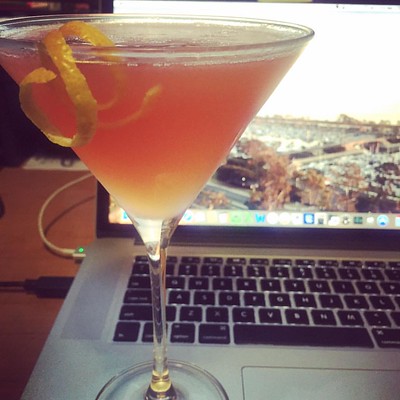
Tamarind, mole, and mezcal cocktail
If you reached this point is because you are an adventurous drinker who is looking for more. Well, we have more for you. A cocktail that offers you the taste of Mexico in every sip.
You will need a mole. There are many types of the delicious mole in Mexico. For this cocktail, we recommend you buy black mole. Its taste includes spicy (cinnamon, chili, anise), peanut, and chocolate notes.
Get ready a Margarita glass or any glass with a wide rim. Mix a bit of salt with sugar and sesame. Run a lime around the rim of the glass and dip it into the mix to get the rim coated. Add ice to the glass.
Then take a blender and add the mole (1 teaspoon) and tamarind syrup (59 ml-2 oz). Pour this into the glass. Then add mezcal (45 ml-1.5 oz) and fill the glass to the top with soda.
Get a slice of lime or a couple of them and decorate the rim.
This is a really exotic Mexican combination. Tamarind acidity, combined with the ancient tradition and deep taste of mole, and mezcal produce a memorable pleasure in your palate.
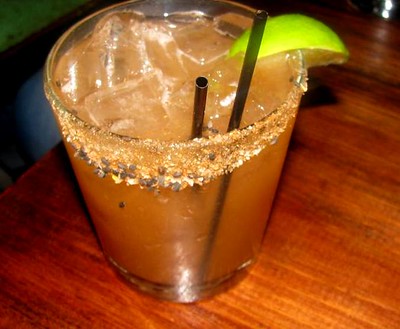
We recommend you use fresh fruits and juices for preparing these cocktails. But if you can't get them, you can buy syrups in the supermarket. The main objective is not to stop the fun!
Conclusion
Mezcal is a delicious and interesting Mexican spirit. Be sure that drinking it neat or in a cocktail will be a pleasant experience. The last decision about which way is better is totally yours! Share your comments and experience with PackandGo.info ! Cheers!
If you like to know more about mezcal, check our article "Mexican mezcal is a sip of heaven - Interesting facts about mezcal".
| Follow PackAndGo.info at: | |
| YouTube | @packandgo. |
| @packandgo.info | |
| X | @packandgoinfo |
| Bluesky | @packandgo.bsky.social |
| @packandgo.info | |
| TikTok | @packandgo.info |
Expectation vs reality: first time into the forest!
- Details
- Written by: Gianna Esquivel
- Hits: 838
This article has been written based on a true and personal story, guys. I love to travel, just like all of you. I like to plan my trips but sometimes it’s nice when you can join others' plans. It sounds fun and comfortable that the destination and most of the plans have been already decided by others, so you only have to take a couple of things in your backpack and go with the flow.
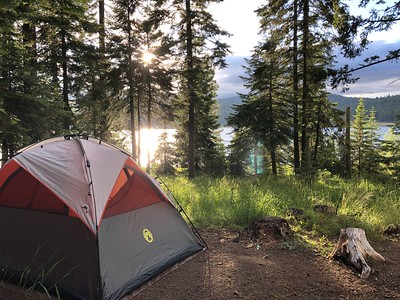
That happened to me during a long weekend (four days). Some friends invited me to stay 3 nights in a nice forest. I got excited about the idea because I didn’t have another plan and nature sounded better than staying in the city.

I didn’t think so much before deciding. I got a couple of cool images in my head, I joked with my friends about finding the elf of our life there, and then I firmly said “yes, I’m in”.

Why not? The only time I have been in a forest before was on a primary-school trip. So it’s time to try by myself. My adult version felt like challenging the MacGyver soul for sure I have somewhere inside and to enjoy a short staying among those high trees, the cozy environment that woods, nature smells and a romantic bonfire produce.
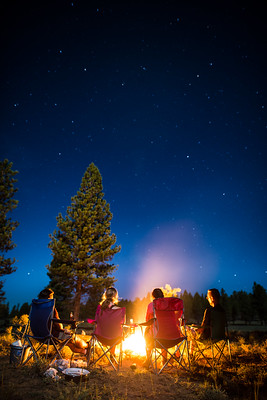
If you are getting excited about these thoughts just like I did, stop right now! Those images are the ones movies provide us. Reality can be very different and you really need to be prepared.

Forest holidays – Common mistakes.
Not to know the type of forest you will visit.
My blurry memory about that one-day school trip made me forget that there are different kinds of forests. That one I visited when I was a kid was a park or an urban one. A forest is not just a bunch of trees but a bigger challenge and conditions can change depending on the weather, location, wildlife, etc. But laziness together with the initial excitement made me forget to ask for more details about the destination. And this was the beginning of a chain of more mistakes.
| Follow PackAndGo.info at: | |
| YouTube | @packandgo. |
| @packandgo.info | |
| X | @packandgoinfo |
| Bluesky | @packandgo.bsky.social |
| @packandgo.info | |
| TikTok | @packandgo.info |
Not to consider day and night are very different in a forest.
So to pack just a couple of shorts, T-shirts and some sandwiches like back then, when I was a kid, can be a painful mistake, believe me! Temperature variations can be extreme so you will need extra warm clothes, sunglasses, sunscreen, and a raincoat if you are planning to stay some nights there. Humidity and cold were strong due to the constant night rain we had.
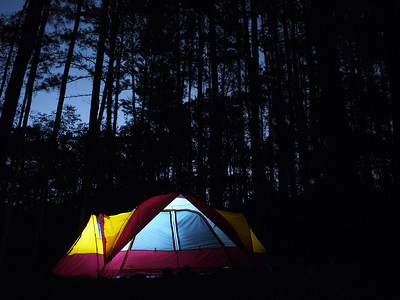
Not to plan and prepare for the basics to survive in a forest.
I have to tell you that the MacGyver soul sadly doesn’t inhabit every human body. Improvisation under hard weather conditions is a wrong idea. Important skills like hunting, making fires, building a shelter, etc. don’t grow spontaneously. And especially when people don’t have experience at all in specific environments, to plan at least the basics is a must.
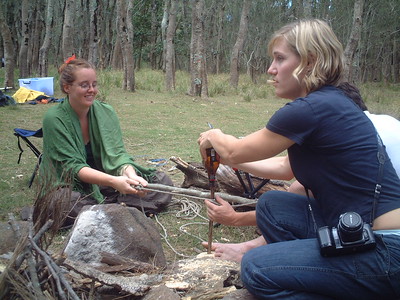
Since I didn’t ask details to my friends, I realized until we were in the forest that it was the first time for everybody on such an adventure. In the beginning, it was fun to see everybody failing like trying to make fire. But when it got dark and cold, it wasn’t fun anymore. Besides, it rained so even we managed in a moment to ignite the fire, we failed to keep it on.

Not to take enough and convenient groceries.
Before arriving in the forest we bought groceries in the supermarket. But everybody bought freely. There was not a common plan. Some thought about not carrying so much weight because they wanted to enjoy trekking. Others bought a lot of snacks but neglected a bit the water because it’s heavier. Nobody thought about matches or water filters. We managed to get the fire by luck. One of us was a smoker, so she had lighters. And even we spent only three nights there, some ran out of groceries and water faster than others. The first two days we had even wine and cold pizza, but the third we barely had water enough for all. And since we didn’t plan, every day we just kept going deeper and deeper into the forest without knowing when or where we could find a place to buy stuff.

How to enjoy forest holidays? - Tips.
Well, the experience was not completely nice but we learned a lot. Check these tips so you can enjoy your next forest holiday.
Get information about the type of forest you will visit.
No matter you didn’t plan the trip, you only joined it, get information about the forest you will visit. Location, weather, facilities in the place or around. Some forests are prepared for welcoming all kinds of visitors, with and without experience. Facilities are made to access food, water, toilets, huts, camping spots, etc. without a big effort. But fortunately, there are forests untouched by human hands so they are a bigger challenge. In this case, planning, preparation is key.
Choose a proper tent or rent a hut.
During the day you will be active and enjoy nature. But you need a safe place to sleep. Sometimes days can be very hot, but nights cold and rainy non-stop. Considering you already know the weather conditions of the forest you will visit, take with you a good tent. Forget to pack the light-beach tent you already have at home, because you can experience a forest version of “Cast Away” movie during a rainy night. Everything but a cozy scene. If you don’t have one or you don’t want to risk, check for huts or shelters. To rent a hut or to hit a shelter won’t make you less adventurous or brave. The main idea of holidays should be to enjoy, not to suffer.
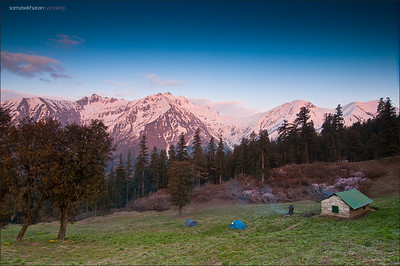
Pack properly and Go!
We, travelers, know the benefits of packing lightly. But the time you plan to stay in the forest and its conditions will define what exactly and how much you have to pack. Clothes and tools are important. For instance, if there’s a river or lake you could purify water on demand with a proper water purifier. Then you won’t have to take many bottles in your backpack.

Take a pocket knife, matches or lighter, map and compass, headlamp, food enough, water and purifier, a basic first aid kit, insect repellent, a whistle, and a GPS app for your mobile. And very important, try them before. If you don’t have an idea about how to use these things, you can be stressed and maybe humiliated by a little boy scout.
Buy enough and adequate food.
About the amount of food, buy considering if you go alone or with a group to organize and guarantee food for everybody. To match tastes can be hard but it’s better to have a common ground. Everybody can buy independently a couple of snacks they love. But to know the food that is available for every day, for everybody is more helpful.
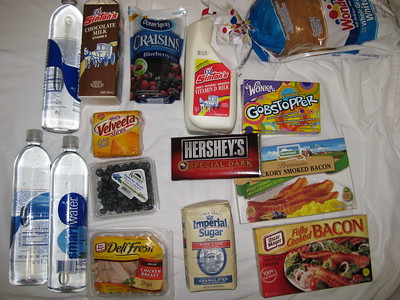
Also get information about the availability of shops, food or water stands. Chocolates, nuts in general and dry fruits are a good idea. They provide a lot of energy in a small package. Practical stuff to make sandwiches or some conserves (cans) are a smart ace up your sleeve. They last longer and you can eat them cold or warm.
Remember, food is important but water is critical, so it should be a priority!
Pay attention to forest signs and the surroundings.
The forests are beautiful. The bigger they are the better, but also the easier to get lost. This is not to be scared. To find your way back is part of the challenge and it can be a fun story to share later. Just pay attention to the surroundings, look for trail blazes or color signs on the trees. They provide direction. And do it before it goes dark.
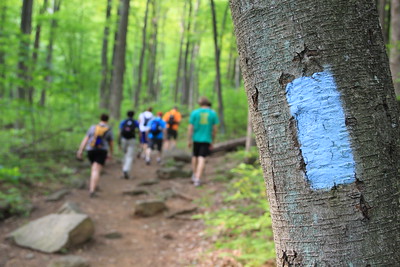
Tell a friend or family member about your plan.
Before leaving, share with someone highlights about your trip. How long are you going to stay there? Where exactly do you go? Everything will be great but some caution is not bad.
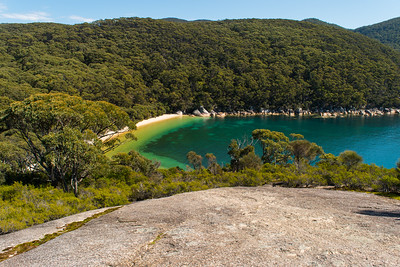
Enjoy the benefits of planning your holidays.
Once there, enjoy, yes, you don’t need to be a professional to admire nature. Pay attention to the landscape, to the delicious and pure forest scent. Take as many pics as you want. Train your eyes and all your senses while enjoying. You will be proud when you realize that every element, besides beautiful, is a valuable reference for you not to get lost.
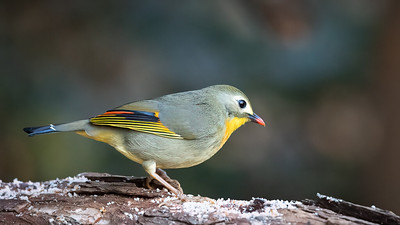
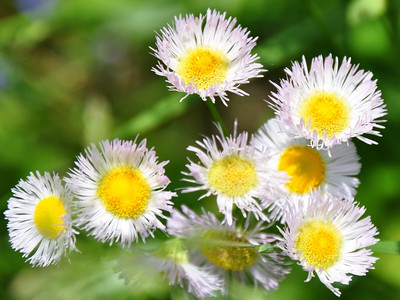
Conclusion.
Forest holidays can be great with a bit of planning! To take new adventures in challenging landscapes, environments, different countries or continents is great but being spontaneous, meaning improvised, all the time can kill the fun. And we want the opposite, more fun and cool stories to tell, than trouble!
Enjoy your next forest holidays. Be ready for exciting encounters not really with elves but wolves, birds, bears, raccoons, skunks… just watch out! They are not interested in having selfies so keep your distance and be safe.
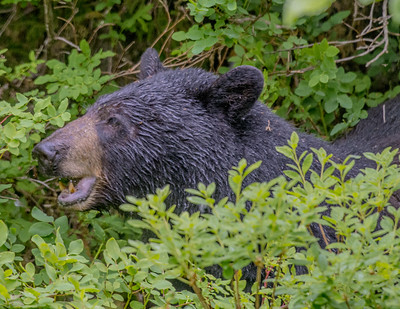
Share your experience, pics, or more tips with us! Let’s build together a nice traveler community through Packandgo.info.
| Follow PackAndGo.info at: | |
| YouTube | @packandgo. |
| @packandgo.info | |
| X | @packandgoinfo |
| Bluesky | @packandgo.bsky.social |
| @packandgo.info | |
| TikTok | @packandgo.info |
By the way, if you enjoy this article you can also like "Expectation vs reality: on the beach!".
Page 4 of 6
